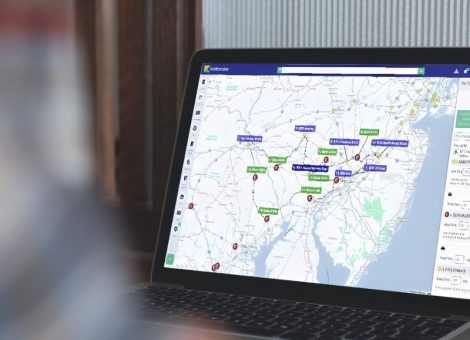From client to Kalibrate

If you know the Kalibrate team, you’ll know that many of our people have extensive industry experience. We believe it makes us better equipped to answer our clients’ challenges and get the most from our relationship. Here, we catch up with three new additions to the team and learn more about their experience of working with and for Kalibrate.
Tell us about your experience of Kalibrate before joining the team

Brian McDonald:
Prior to being with Kalibrate I worked for Bloomin’ Brands, Inc. We were a client of Intalytics and then Kalibrate as the integration progressed. Bloomin’ is a multi-brand restaurant operator (i.e., Outback Steakhouse, Carrabba’s Italian Grill, Bonefish Grill, Flemings), so Bill McKeogh and his team created four models for each of our brands.
We’d have Bill and Kevin King come visit us and talk to the development team – but also talk to the finance team and the marketing team because the model outputs are so useful across different functions.
Retail analytics is a small world, and I’d encountered many of the Kalibrate team or heard about what their platform and modeling was doing from my peers. Connections and trust are important and, as well as my first-hand experience as a client, I heard the right noises from the right people.

Steve Fearn:
Many years ago, I worked for a company called Thompson Associates with Dave Huntoon, Gary Faitler, and others – quite a few of which ended up at Intalytics, which became part of Kalibrate a few years back.
When I was working at Ross Stores, I met Bill Dakai and the Trade Area Systems (TAS) team as we used their platform. I also spent time at Micheal’s – and, again, ended up using the Trade Area Systems’ platform.
When Intalytics and Trade Area Systems became part of Kalibrate it gave me the best of both worlds as the end client. I got the talented analytics function from legacy Intalytics doing my models and it all lived within the platform I favored most, TAS Online, which progressed into Kalibrate Location Intelligence.
As Brian said, retail analytics is a small world, so I knew a lot of the people and the products long before I arrived at Kalibrate. I was comfortable that I was joining a business that had a strong offer across the board.

Kirk Emery:
I seemed to have followed Bill McKeogh around when I was procuring on the client side! I’ve worked for Sobey’s (grocery), Shoppers Drug Mart (pharmacy), which then was acquired by Loblaws (a grocery retailer supporting telco and banking). I was also with Rogers (a telco), and full circle back to Loblaws. Across those roles I variously worked with Bill while he was at MapInfo, Pitney Bowes, Intalytics, and now Kalibrate – so it’s quite a long-standing relationship.
My longest period was with a Canadian telecoms firm, and we used Intalytics for our models. It was a complex business with multiple brands and sub-brands, each of which had similar customer profiles. Anyway, we gave Bill and his team the task of creating the forecast models and were very happy with the results.
To echo what was said above – knowing the caliber of the Kalibrate team means I’m excited to bring my experience to the other side of the table
What are your roles at Kalibrate?

Steve:
I’m the principal consultant to our clients. Simply put, I’m here to offer support and to help them reach their development goals. That could be explaining what a model is really saying, advising what tools they could use, or simply giving some of my experience having been sat in their seat.
I’ve worked with all types of retailers over my career, so I totally understand the pressures they have. Anything I can do to help them navigate those internal issues and reach their development goals, that’s what I’m here for.

Brian:
I’m an account manager so we’re the key point of contact for our clients. I support the development of our software and analytics projects.
The key thing is the relationship – knowing the client understands the types of questions we can help them answer. That might be purely real estate development, but it can – and often does – go in other directions. For example, we find ourselves speaking to marketing teams keen to leverage Kalibrate Location Intelligence’s mapping and reporting to support customer acquisition efforts.
At the core though, I’m the voice of the client within Kalibrate. We’re always in listening mode – so how did that project go? What can we do better next time? Have the results raised more questions? How can our services answer those? I want to know how we can better meet their needs and ease their internal pressures.

Kirk:
I’m the newest arrival and, like Steve, I’m on the consultancy side and my role varies from day to day. I might be working on how best to structure data before its presented or troubleshooting outputs before they get to the client. I could also be working with clients on the justification and the business case so they can take that to their finance team. Being just over 3 weeks in the roll I’m excited to hone my Alteryx and KLI skills as well as enhance processes and presentation.
A lot of prior experience helps. I’ve been in the real estate department trying to get approval for a project that you know is going to solve a lot of the big questions you’ve had about strategy. We try to consider how the executive will want to receive insights and anticipate the questions they will have. Similarly on the finance front or legal – knowing the stakeholder your clients need to win-over definitely helps relationships.
Tell us about joining the Kalibrate team and your experience so far.

Kirk:
I knew a handful of staff before joining Kalibrate and that’s what attracted me to becoming part of the team. My experience has been similar to Steve and Brian. Everyone has extended a hand whenever I’ve had questions while being happy to collaborate to answer our clients’ questions.
Honestly, my experience of being here so far has been amazing. I’ve been getting to know the cross functional team members across North America and sharpening my mapping ( KLI / QGIS) and analytical skills (Alteryx). I am looking forward to my first client facing meeting, it’s the good kind of nervous.

Steve:
Coming into the organization I already felt like I knew Kalibrate because I had relationships with so many people from past roles. So far, I think what I’d expected has proven true. It’s not just that there’s quality people that know the business, there’s just quality people, period.
The successful delivery of software with analytics is dependent on really good internal communication – and, fortunately, we have no silos. Having a team that is very client-centric means there isn’t really any friction in achieving the best we can for each project.

Brian:
I would agree with everything Steve said. The connections, communication, collaboration – all of this is positive across teams. I can talk to anyone from consultants, modelers, data engineers, product managers, and account managers. That’s the culture. If you think of the legacy companies of TAS, Intalytics, and eSite, it makes sense as those companies were big on collaboration and innovation. As one Kalibrate, everyone’s coming at service and product with the same ambition; to be the best at what they do.
Whenever there’s time pressures or schedules get tight, individuals are happy to drop what they’re doing and help get projects over the line.
How does experience working in the seats of retailers help you better support clients?

Brian:
As just one example, we had a client recently who was getting pressure on their proposed timelines from the executive sponsor. Our engagement included a series of analytics deliverables alongside platform integration. They came to us and asked for the path of least resistance to satisfy the needs of their internal stakeholders. I had to become the calming influence, working out the milestones that needed to happen to get results based on the executive ask.
Generally, having sat in their seat, you’re better positioned to help them navigate bumps in the road. Say a new location didn’t perform as the model expected. I’m comfortable walking through the factors that went into the model alongside the operational reality of the site to understand why they’re seeing the variation. Very often, having done similar openings and ramp-ups cycles myself, we can solve any issue quickly.

Kirk:
The main thing I’d say is client-side experience makes me a better partner. I think I understand the pressure points during a project and then can be extra proactive about making sure the client is comfortable.
That might be in the model build – explaining exactly why particular variables are more important than others. Often, the client has a good idea of what their strategy should be and we’re just the third-party validation and eventual optimization. Having been in that situation, having a third-party like Kalibrate sit down with internal stakeholders and explain how particular results are generated is incredibly helpful. I’m happy to do that for clients as I know I’d value the same service in their shoes.

Steve:
It’s vital to how I approach working with my clients. Working in the real estate seat, I’ve had to sit with the CEO and answer questions from the board. Whether it’s strategy, growth, how we’re doing, and the financials – I’ve felt the clients’ day-to-day challenges, so I’m better placed to help them manage their relationships.
Sometime clients just need confidence in the strategy. They’re being told to grow but they need to do it in a way that limits risk. They might get internal pushback on a particular approach. There, my job becomes to help explain our analysis validates their action – effectively saying: ‘the data says your decisions are right based on everything we collectively know about your concept and its opportunities.’
Are there any exciting client projects coming up you’d like to share?

Steve:
We have a client project coming up that is heavily membership-focused. They’re an outdoor concept with a great brand and strong transaction levels from their membership base. I haven’t done a model strictly for membership growth before so it’s a new one for me – one of the advantages of moving to Kalibrate is I get to diversify the types of projects I work on.

Brian:
We’re working with an operator in the veterinary space. At first, they came to us for KLI to get their data in one place and understand a little more about their customer profiles and trade areas. But we’ve just had a training session with their marketing team and they’re exploring use cases for local campaigns, event planning, and seeking business partners in their local markets. One of the underutilized capabilities of KLI that clients need more help with is using it as a marketing tool – there’s loads of insight a competent marketer can use to be more effective with their budgets and we are working to make it easier for marketers to access the maps and reports for these capabilities in KLI.

Kirk:
I’m only just getting started on projects having recently arrived, but we have an interesting one in the convenience food space. The client needs a model refresh, which isn’t unusual – except their last model build was 2023. They’ve just grown so quickly that they have so much more data and want to know how it can help them optimize their continued expansion. It’s exciting to be working with concepts that are doing so well. It’s fast paced but you get a kick from their energy. That’s one that stands out so far – ask me again in a year and I’m sure there will be hundreds!
Read more articles about:
Location intelligenceSubscribe and get the latest updates
You may unsubscribe from our mailing list at any time. To understand how and why we process your data, please see our Privacy & Cookies Policy
Related resources
Location intelligence
The power of data for smaller fuel retailers. Big decisions without big data
The key is knowing which numbers matter and turning them into actionable insights, not dashboards that gather dust.

Location intelligence
The future is hybrid: How AI will reshape fuel and mobility retail
AI is reshaping how consumers discover, shop, and pay, both on the forecourt and beyond. Yet for fuel retailers the...


